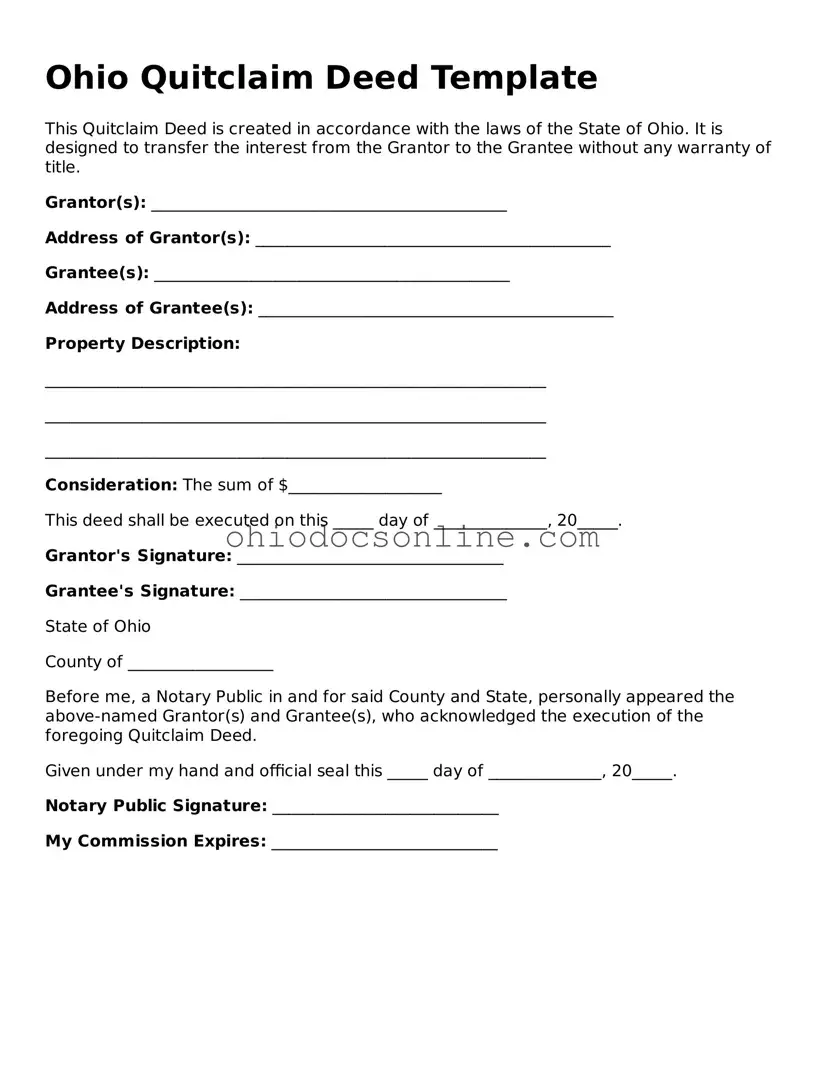Printable Quitclaim Deed Template for Ohio
A Quitclaim Deed is a legal document used in Ohio to transfer ownership of real estate from one party to another without any guarantees about the title's validity. This type of deed allows the grantor to relinquish any claim to the property, making it a straightforward option for property transfers among family members or friends. Understanding the implications and proper usage of a Quitclaim Deed is essential for anyone involved in real estate transactions in Ohio.
Open Editor
